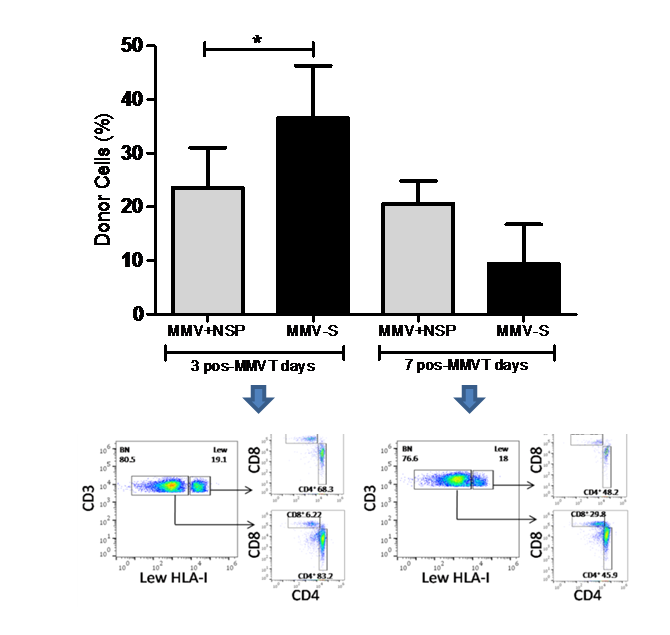Introduction: Native spleen used to be removed in patients undergoing modified multivisceral transplantation (MMVT) increasing the risk of sepsis and graft-versus-host disease (GVHD). The mechanistic basis of these effects including mixed chimerism level is poorly understood. Based on a novel experimental procedure of MMVT that triggers GVHD, we aimed to evaluate the effects of native spleen preservation in this model in order to gain insight into the mechanisms that may mediate this phenomenon.
Material and Methods: Heterotopic MMVT from Lewis to Brown Norway rats was performed. MMVT graft consisted of stomach, duodenum, pancreas, spleen and the small bowel of the donor. The native spleen was removed (MMVT-S) in half of the MMVT recipients (N=5), while the remaining preserved their own spleen (MMVT+NSP) (N=5). After MMVT mixed hematopoietic chimerism was determined in native spleen and peripheral blood samples by flow cytometry using strain-specific HLA antibodies. Also, histopathological (using Pintar score) and clinical signs of GVHD such as skin rash were evaluated.
Results: all animals in the group MMVT-S presented clinical signs of GVHD such as skin rash, weight loss, and diarrhea, among others, between 7-10 days after transplantation. Skin rash was particularly remarkable in the ears and periocular area. Clinical signs of GVHD were less frequent in MMVT+NSP recipients (40%; p<0.05). Also, significant differences between groups were observed in the histopathological study and mixed chimerism in peripheral blood 3 days after MMVT (36.6 and 23.62 % in MMVT-S and MMVT+NSP respectively) (Figure 1). Also, native spleen showed an 18±5 % of chimerism (CD3+ donor cells) 1 week after transplantation. After day 10 post-MMVT, when the signs of transient GVHD disappeared, both groups presented graft rejection.
Conclusions: Native spleen preservation in MMVT recipients attenuated the occurrence of GVHD and reduced the level of chimerism compared to recipients that underwent spleen removal during MMVT. Despite more studies are necessary, our preliminary results suggest that native spleen preservation increase the efficacy in removal of anti-recipient reactive clones that would explain the protective effect of native spleen preservation against GVHD.

.jpg )